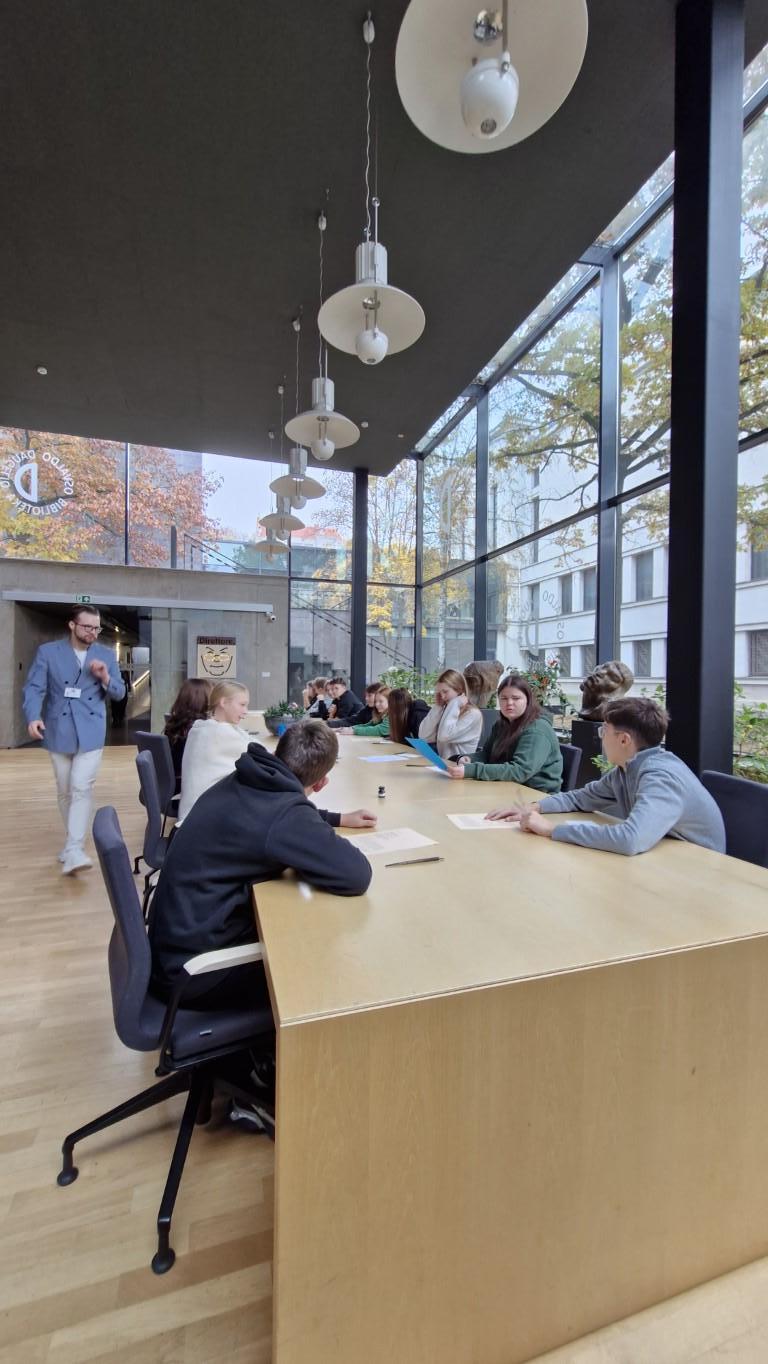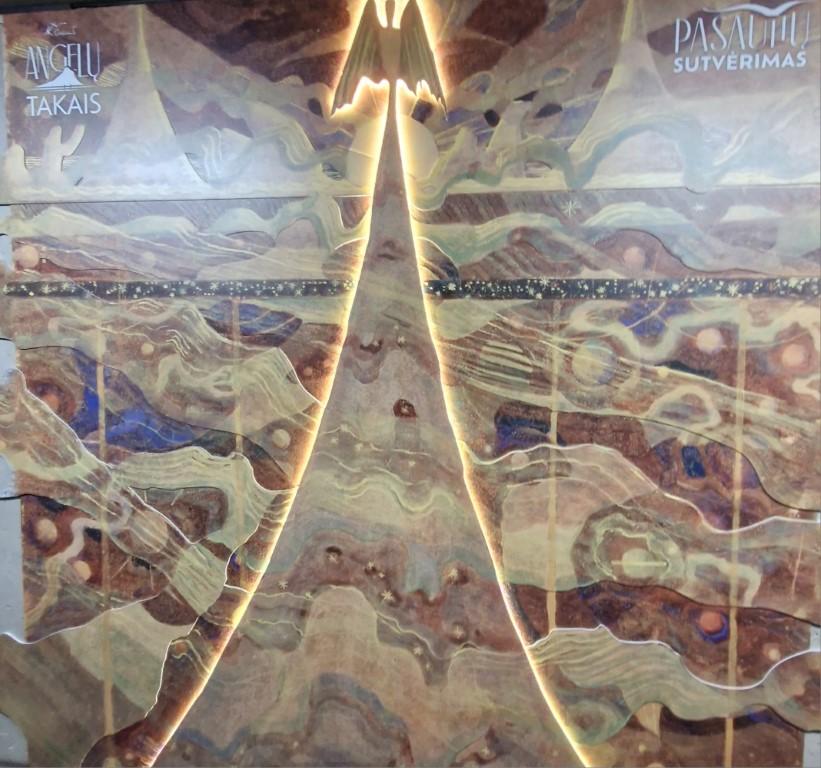
Discovering Mikalojus Konstantinas Čiurlionis
A group of Lithuanian Section students from classes S4–S6 took part in the cultural project “Discovering Mikalojus Konstantinas Čiurlionis”, which brought together the communities of three schools: the Lithuanian Section of the European School Brussels II, the Lithuanian Home School in Vilnius, and the Riga Lithuanian Secondary School in Latvia.
As 2025 marks the 150th anniversary of the birth of the renowned artist Mikalojus Konstantinas Čiurlionis, the aim was not only to deepen our understanding of this extraordinary figure of Lithuanian culture but also to create something meaningful and artistic ourselves. Working on such a project together with our friends made it even more enjoyable — that’s how the idea for this collaboration was born.
Each school organized a series of interdisciplinary lessons for students of different ages, introducing Čiurlionis’s life and his multifaceted art — literature, music, and painting. Students watched and discussed the film “Letters to Sofija”, took part in quizzes and creative workshops, wrote letters to Čiurlionis, analyzed his works, and prepared exhibitions of their own creations. Ideas were shared virtually, and everyone eagerly anticipated the final meeting in Lithuania.
At the end of October, we gathered in Vilnius for several days. Our first stop was the M. K. Čiurlionis National Museum of Art in Kaunas. Guided through the painting galleries, we listened to fascinating stories about the origins and symbolism of the works and even tried to interpret some of them ourselves. During creative workshops, we wrote calligraphic letters in ink and designed our own symbolic drawings. A highlight for many was the virtual reality experience “The Path of Angels” and “The Creation of the World”—an immersive journey through Čiurlionis’s world of visions and sounds, where mythology, cosmos, and abstraction intertwine.
The next day we travelled to Druskininkai, the town where Čiurlionis spent his childhood. We visited his family home and held creative readings in front of the house. Students presented their best competition pieces inspired by Čiurlionis — poems, haikus, and short prose works.
Through this shared experience, we came to see more clearly how Čiurlionis’s art reflects Lithuanian history, folklore, and worldview, while also embodying universal human values. The project offered not only deeper knowledge but also a vivid and inspiring way to understand the interconnections between art, music, and literature.







